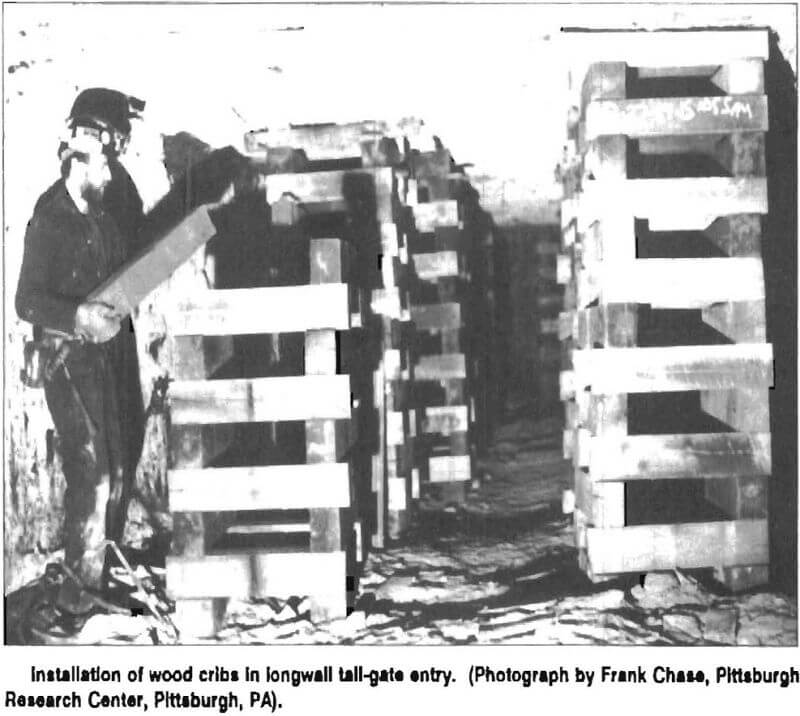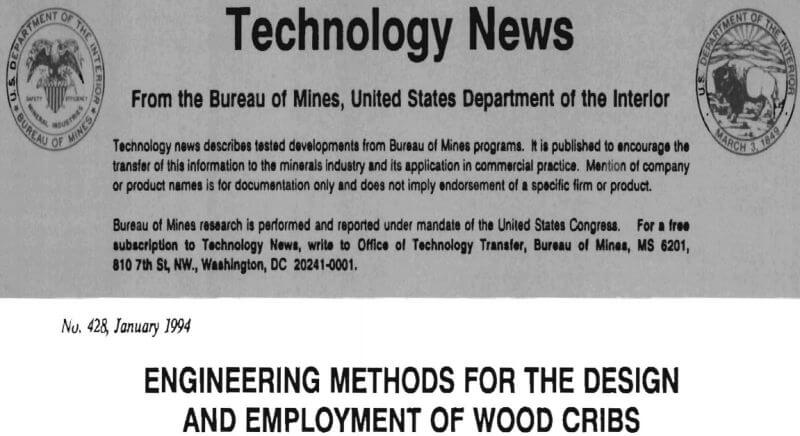Objective: To minimize support costs and to improve ground control by improving wood-crib design and utilisation through the development of engineering methods that will match the placement and performance of the wood cribs to the load conditions imposed by the mine environment.
Background: While wood cribs are used extensively to stabilize mine openings, their utilization is often based on historical practice or trial-and-error rather than on engineering design. This has led to conservative crib utilization where more capacity than is necessary is employed or inadequate capacity is provided when mine conditions worsen. Critical design parameters, such as the stiffness of the support structure, arc often ignored. Optimum crib design and employment is becoming increasingly important as the utilization of wood cribs increase due to the growth of longwall mining, and as the cost of wood continues to rise. A single longwall operation will spend as much as a million dollars per year on the support of the gate roads.
Approach: A model has been developed that predicts wood-crib performance. The model determines the force-displacement relationship for various wood-crib designs through a mathematical equation developed from full-scale testing of several support configurations in the U.S. Bureau of Mine’s (USBM’s) Mine Roof Simulator Information required to apply the model include:
- the species of wood;
- the compressive strength and hardness of the wood;
- the dimensions of the timbers;
- the number of layers in the structure;
- the number of timbers per layer; and
- whether the crib is constructed with or without overhanging timbers.
This model will predict the force-displacement relationship of a wood crib within a 10-pct error through 20-pct crib strain.
The design and employment procedure matches the strength, stiffness, and stability of a wood-crib design with the loads imposed by the mine environment to determine a placement strategy. The procedure is founded on the premise that the cribs must provide sufficient resistance to preserve the integrity of the mine roof and floor. Hence, the primary design requirement is to provide the proper crib stiffness to prevent deflection of the immediate roof beam to failure. Once the stiffness of the crib is determined from the wood-crib performance model, the required crib spacing to control roof deflection is determined. The maximum required crib capacity occurs when the immediate roof has no strength and the full weight of the stratum that is detached from stable roof structures must be supported by the crib.
Comparison of support performance for different crib designs is determined by computing: (1) the employment cost; (2) the spacing where the cost of the support employment is equal; and (3) the spacing where equivalent support resistance is provided. These comparisons will lead to optimum crib design and employment.
Results: The design and utilization of wood cribs can be optimized if the load carrying characteristics of the crib and the load conditions imposed by the mine environment are well defined. Since the development of support capacity within a specified displacement is crucial to ground control, efforts to maximize crib stiffness should be a design priority. Recommendations to achieve optimum crib design and employment based on the engineering methods developed by the USBM are summarized as follows:
- Cribs should be constructed with a timber overhang of at least one half the width of the timber.
- Cribs should be constructed from wood of the same species or from wood with similar compressive strength and hardness.
- The aspect ratio (height-to-width ratio) should be maintained between 2.5 and 4.3 by selecting the appropriate timber length for a specified mining height.
- Wood cribs should be constructed to maximize the interlayer contact area by placing the wide side of the timber horizontally.
- The stiffness of the crib can be increased by increasing the number of timbers per layer or by increasing the width of the timber. Increasing the timber width should be given first priority since additional timbers per layer will increase labor employment costs.
- Crib design or employment should vary with changes in mining height to maintain the required support system stiffness.
- Multi-timbered cribs that employ more than two timbers per layer provide greater capacity and can be employed at less cost than conventional two-timber-per- layer crib designs provided they can be spaced at distances commensurate with their capacity advantage.


